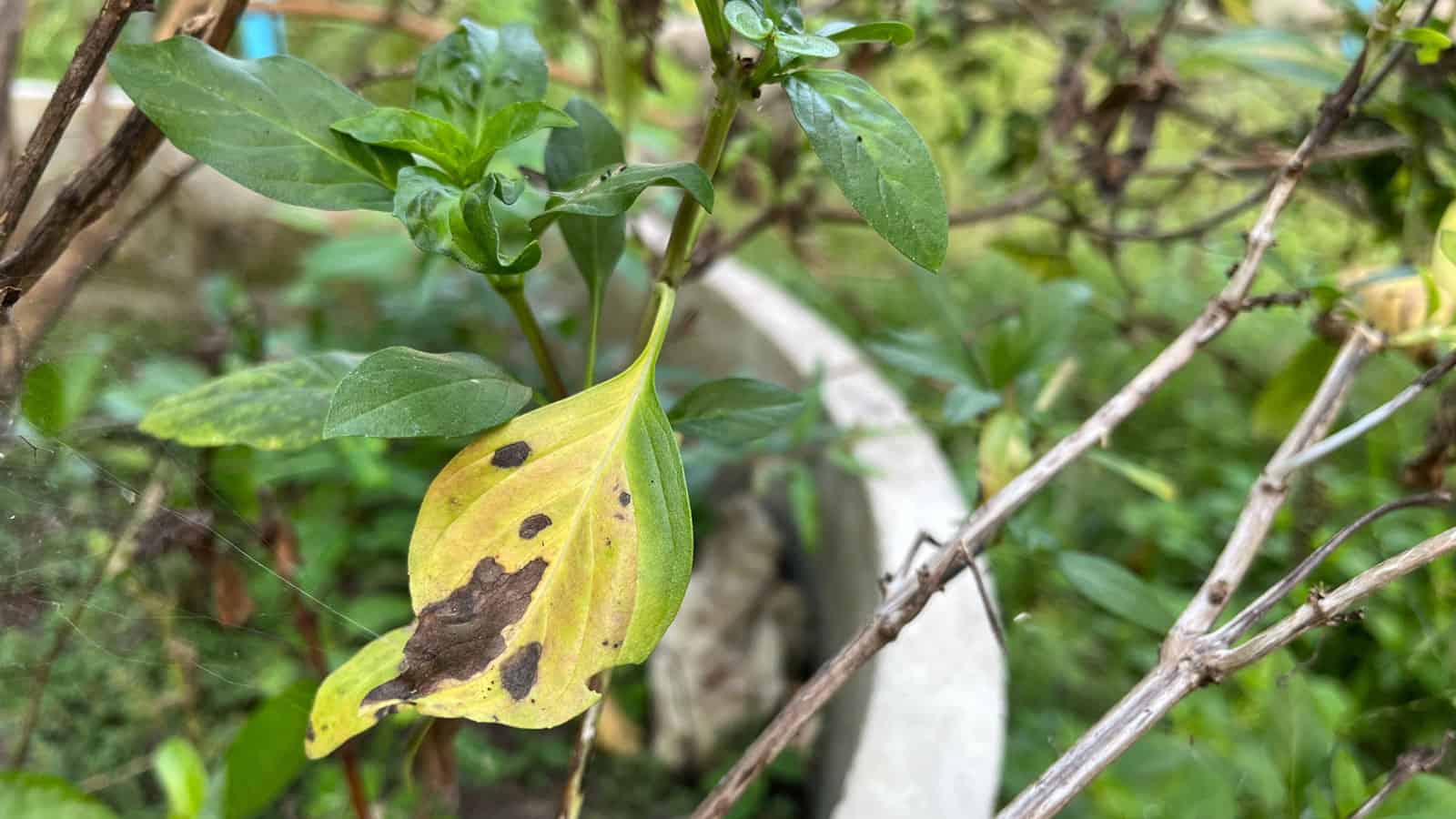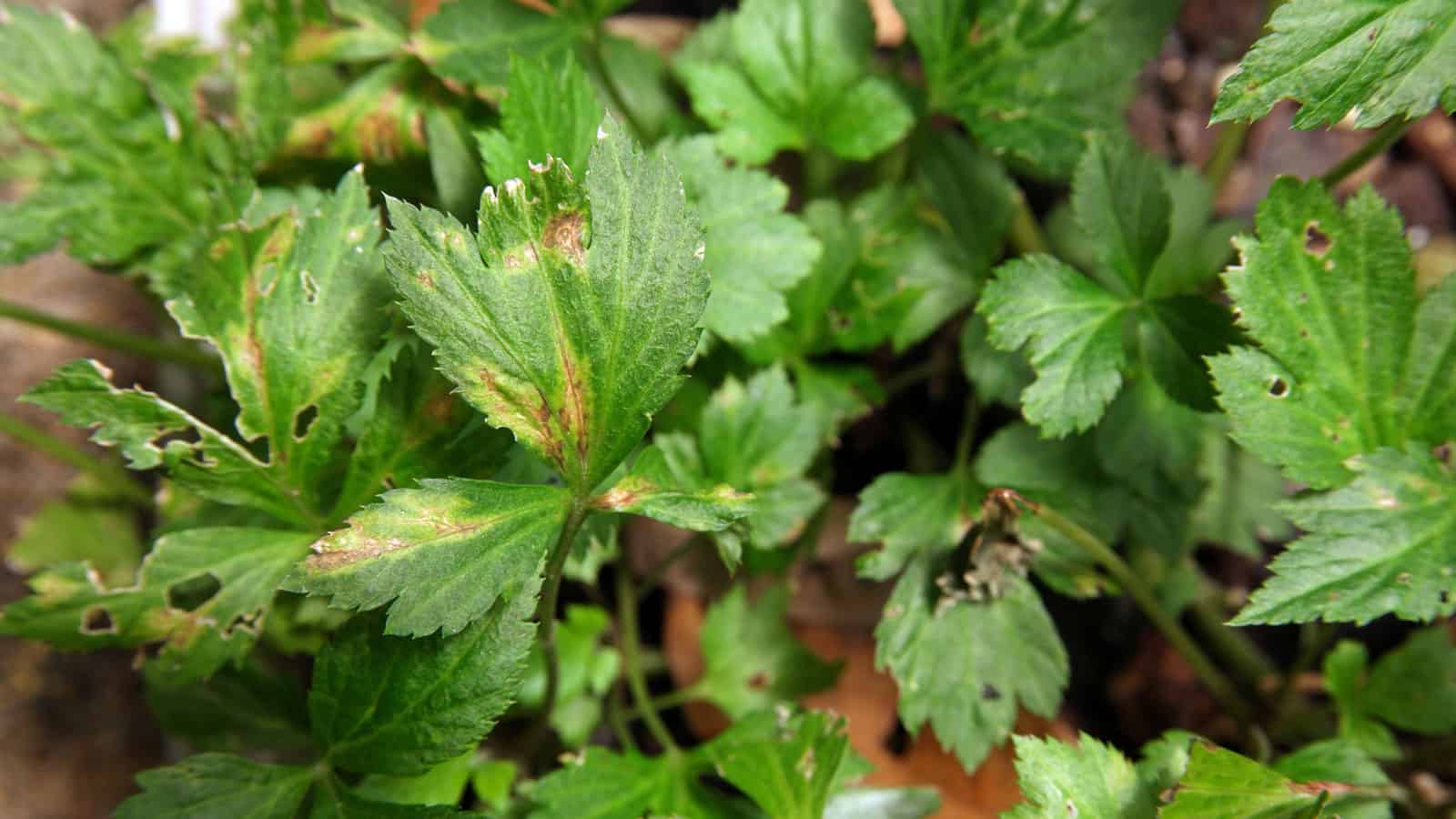Ever noticed your herb garden isn't quite bursting with life, despite your best efforts?
Sometimes, the clues are subtle - yellowing leaves, a mildewy touch, or even a distinct smell coming from your basil and thyme. It's these small signs that can reveal larger issues at play.

In this article, we decode these signals and arm you with effective, easy-to-implement fixes.
Let's embark on a journey to transform your herb garden into a thriving oasis of flavor and fragrance!
Sign #1: Yellowing Leaves
Yellowing leaves in your herb garden are more than just an aesthetic issue; they're a red flag signaling possible troubles ranging from water imbalances to nutritional deficits.
This condition, known as chlorosis, could be due to several factors:
- Watering and Nutrient Issues: Too much moisture can suffocate your plants' roots while underwatering leads to drought stress, both affecting nutrient uptake.
- Poor Soil: A lack of essential nutrients like iron and manganese can lead to yellow foliage.
- Inadequate Sunlight: Mediterranean herbs thrive with over 6 hours of sun, while annual herbs prefer partial sun. Cold drafts can stress the plants, which can cause a paling.
How to Fix
Here's how you can address yellowing leaves:
- Adjust your watering habits. Make sure you're not over – or underwatering by checking the soil moisture before watering.
- Improve the soil quality by adding compost or a balanced fertilizer to replenish nutrients.
- Manage light exposure by placing your herbs where they receive the appropriate amount of light.
Read our detailed guide on speeding up herb growth for healthier, greener plants.
Sign #2: Dead or Droopy Leaves
Dead or droopy leaves in your herbs can be due to several care and environmental factors. For example, herbs may droop temporarily in extreme heat as they try to hold onto water.
As with the previous scenario, not getting the right amount of water and sunlight can also lead to wilting in herbs.
Physical constraints, like limited growth space and transplant shock, can also contribute to droopiness.
How to Fix
To revive your herbs from the dreaded droop:
- Check the moisture. Stick your finger into the soil up to the first knuckle. If it feels too dry, your plants are likely underwatered. If it's consistently soggy, you may be overwatering.
- Regulate temperature by positioning your plants away from heating vents and cold drafts to maintain a consistent temperature.
- Give them enough room and be gentle. When you move them to a bigger pot, do it carefully and give them time to get used to the new place.
Sign #3: Brown or Purple Spots
Brown or purple spots on your herb leaves can happen for a few reasons. Sometimes, a pest called the four-lined plant bug is to blame, causing spots that turn from yellow to brown or black.
Other times, it's a water issue called oedema, where too much or too little water causes rust-colored spots, especially on the undersides of leaves.
Also, simple things like splashing cold water on sensitive leaves or not watering correctly can lead to spotting.
How to Fix:
Here are some straightforward steps to address the issue of brown or purple spots on your herb leaves:
- Keep an eye out for the four-lined plant bug. Use eco-friendly bug sprays or introduce natural predators to your garden if you find these bugs.
- Use room temperature water, and pour it near the base of the plants to avoid getting the leaves wet.
- Make sure your herbs aren't too crowded and air can circulate freely around them. This helps reduce excess moisture that can lead to problems.
Sign #4: Mildew on the Leaves
Mildew, specifically powdery mildew, is a fungal disease favored by warm, dry environments with high humidity at the leaf surface level.
Poor air circulation and overcrowding of plants commonly contribute to the problem, which can reduce the vigor of your herbs.
How to Fix
To effectively manage mildew, you'll want to address both the environment and the affected plants directly.
- Prune affected leaves and dispose of them properly to prevent spreading.
- Increase air circulation by spacing out your plants.
- Apply fungicidal sprays to protect the remaining plant tissue.
Sign #5: Mold on the Soil Surface
Mold growth on soil typically occurs when there is excessive moisture and poor air circulation.
Overwatering your plants can lead to a buildup of moisture, providing an ideal environment for mold spores.
In addition, a lack of proper drainage in the pot can cause water to pool, further contributing to the issue.
How to Fix
To get rid of mold, start by removing the affected top soil and replace it with fresh, sterile potting mix. Then, consider these steps:
- Improve airflow by spacing your plants well to allow air to circulate freely.
- Only water your plants when the top inch of soil is dry to the touch.
- Use pots with drainage holes, and consider adding a layer of gravel at the bottom.
Sign #6: Rotten Smell from the Roots
When your herb garden begins to emit a rotten smell, it can be a distressing sign that the roots may be suffering from rot, a serious issue that needs immediate attention.
Just like the other scenarios, overwatering your herbs or having poor drainage in your pots are common culprits for this condition.
Additionally, a lack of proper air circulation around the plant's base can worsen the problem.
How to Fix
To remedy root rot, you'll want to take prompt action:
- Carefully lift the plant and inspect the roots.
- Using sterilized pruning tools, cut away any black or mushy roots to prevent further spread.
- Choose a well-draining potting mix and ensure the new pot has adequate drainage holes.
Dealing with root rot? Learn more about how to create the perfect growing conditions in your kitchen to avoid such issues.
Sign #7: Pest Infestations
If you start seeing bugs in your herb garden, it's a big hint that your plants might be struggling.
These infestations can significantly hinder the growth and health of your plants, often leading to reduced yields, damaged foliage, and, in severe cases, the death of the plants.
How to Fix
Taking swift action is key to managing pest infestations in your herb garden.
- Begin by isolating affected plants to prevent the spread of pests.
- Some insects, like ladybugs, actually eat the bad bugs. Having them in your garden can help.
- Use gentle, homemade sprays like soap solutions to remove pests without harming your plants.
- You can also use fabric or covers to stop bugs from getting to other herbs.
- Finally, improve air circulation and ensure your herbs get adequate sunlight to keep them strong and healthy.

Closing Thoughts on Herb Garden Care
Caring for your herb garden is a continuous journey. The challenges you might face – from yellow leaves and droopy stems to pests and mildew – are manageable with the right approach.
You can maintain a vibrant and flourishing herb garden by staying observant and reacting promptly to any signs of distress. It's the small, consistent efforts that make the biggest difference!
